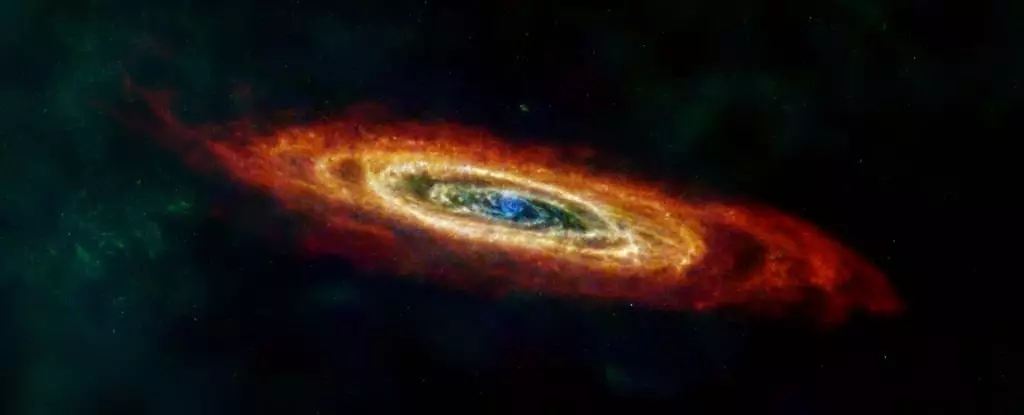Massive stars, defined as those with initial masses exceeding eight times that of our Sun, undergo a dramatic lifecycle that culminates in explosive supernovae, marking the end of their stellar existence. Traditionally, these violent explosions occur after a star exhausts its nuclear fuel, leading to the catastrophic collapse of its core under its own gravity. This collapse produces either a neutron star or, in extraordinarily massive cases, a black hole. However, recent astronomical observations have unveiled a striking anomaly: a significant number of massive stars may bypass the explosive finale altogether, transitioning directly into black holes. This revelation challenges long-standing assumptions regarding stellar evolution and supernova mechanics.
Historically, core-collapse supernovae—specifically categorized as Type II—have been a focal point in the study of stellar deaths. Such supernovae are typically expected to occur every century in a galaxy such as the Milky Way. They are not only spectacular cosmic events but also vital processes for the regeneration of the interstellar medium, contributing the heavy elements essential for the formation of new stars and planetary systems. Furthermore, the shockwaves produced can initiate the birth of new stars and generate cosmic rays, which travel vast distances across space.
However, the detection of M31-2014-DS1, a massive star in the Andromeda galaxy exhibiting unusual characteristics, brings new insight into the final moments of stellar evolution. Observations indicated that rather than detonating in a supernova, M31-2014-DS1 experienced an enigmatic fading after a prolonged period of brightness. Initially observed in 2014, it sustained a glow over a two-year span before dramatically dimming, with subsequent studies over three years revealing no signs of an expected outburst. This deviation from the typical supernova pattern leads researchers to suspect that the star may have collapsed into a black hole without any explosive event.
The pivotal research conducted by Kishalay De and colleagues sheds light on the behavior of M31-2014-DS1. Their findings indicate that the star’s mass declined from approximately 20 solar masses to merely 6.7 solar masses by the time it reached its terminal nuclear-burning phase. Notably, the researchers noted a surrounding dust shell consistent with an ejected material that would typically accompany an explosion. However, the lack of a luminous outburst suggests that M31-2014-DS1 represents a rare case of a “failed” supernova.
The study posits that the lack of explosion may be attributed to a crucial failure in the neutrino shock wave—a vital force usually propelling the star’s outer layers away during a supernova. Neutrinos, produced during the stellar collapse, carry significant energy and can induce a shock wave that heats surrounding material. In M31-2014-DS1, it appears that this shock failed to revive adequately, leading to the star’s collapse into a black hole instead of a dramatic supernova.
The implications of these findings are profound and provoke a re-evaluation of stellar death narratives. The notion that some massive stars can end their lives without a supernova suggests that up to 30% of high-mass stars may share this fate. If true, this has substantial ramifications for our understanding of element formation and the dynamics of stellar populations within galaxies. The measurements gathered provide essential constraints on the mass of ejected material, indicating that about 98% of M31-2014-DS1’s mass succumbed to gravitational forces, forming a black hole with an estimated mass of 6.5 solar masses.
Similarly, the case of N6946-BH1, an earlier candidate for a failed supernova, reinforces the idea that these non-explosive stellar endings may not be as rare as previously thought. Such cases motivate astronomers to refine detection techniques focusing on the absence of expected luminous events, as traditional methods may overlook these elusive signatures of collapsed stars.
The journey of massive stars from birth to demise is a complex interplay of forces—fusion balancing against gravity. The unexpected findings surrounding M31-2014-DS1 unveil a potential new chapter in our understanding of stellar lifecycles. The revelation that a considerable percentage of massive stars may evolve into black holes without the cataclysmic display of a supernova reshapes our comprehension of the cosmos, urging scientists to delve deeper into the intricate workings of stellar evolution and its implications on the cosmic landscape. As technology advances and our observational capabilities grow, the universe may continue to amaze us with its sophisticated and enigmatic processes, challenging our definitions of life, death, and rebirth among the stars.


Leave a Reply